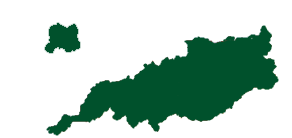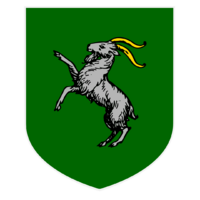Swinas
Federal Republic of Swinas Parnaas Tulapayttap bet Swiinas | |
|---|---|
 | |
| Capital | Tuppelt |
| National Language | Swiina, Common, German |
| Ethnic groups |
|
| Demonym(s) | Swiina |
| Government | Federal Republic |
• First Consul | Eduard Hoffman |
• Second Consul | Lorenzo Ricci |
| Area | |
• Total | 985,095 km2 (380,347 sq mi) |
| Population | |
• 2020 census | 42,299,153 |
| GDP (nominal) | estimate |
• Total | 448,984,350,000 |
| Currency | Swiina Diiydut, Swiina Diiyduttip (SD, SDP) |
| Driving side | right |
| Calling code | +59 |
The Federal Republic of Swinas, known to the native Swiina speakers as "Tild Parnaas Tulapayttap bet Swiinas" is a nation with a rich history and language, being born in what is now the Deserts of Swinas, before migrating to the more arable lands of the northern Swiina plains, where the capital of Tuppelt is located. Whilst the mainland speaks mostly Swiina, the island of Nordinsel is far different, being much more Germanic culturally and linguistically. The Federal Republic is led by the two Consuls of the Republic, along with the Provincial Governors of each Province. Nordinsel has special autonomy laws that allow it to govern itself more freely than other mainland provinces for several reasons. Though there is no official symbol of Swinas, the Swiina people are often associated with rams, with this being reflected both on the Coat of Arms and in their currency, as Diiydut is Swiina for Ram. Swinas is entirely located in the continent of Hiraethia, spanning an area of 985,095 square kilometers.
The origins of the Swiina people are contained in the heart of the now Deserts of Swinas. Once improve travel technology was brought to them in 1000 BCE, the Swiina people migrated north-east to the more arable lands of the Plains, where the Capital City of Tuppelt is located. Following the great migration of the Swiina people, fine arts was being developed in Swiina Culture, as the resources readily available to the Swiina people changed significantly. One major example is pottery having a significantly reduced production as clay was harder to find in the Plains of Swinas, than it was in the Deserts of Swinas.
By 750 BCE, the nations of Swinas would become more developed, and many nations would rise to dominate the Swiina Plains, but would quickly fall to Barbarians, falling short of a century-long reign, and failing to make a significant impact on Swinas. The Pwishga Authority was not one of these nations, but rather would swiftly conquer the Swiina Plains and maintain them from 745 BCE to 620 BCE. The Pwishga Authority impacted Swinas, and allowed for numerous technological and military discoveries to be made. During the Swiina antiquity, the Pwishga Authority would continue to have a lasting impact.
From there, the age of Swiina Warlords would continue to live on until 350 BCE, when Nordinselli Invaders would flood the Talsar Coast of Swinas, and would begin taking huge swaths of land. Most of Swinas would cease fighting, and even some leagues such as the Dapoords League, which ruled over the Southern Swiina Plains. This event would be known then and in the future as the Calamity, or, the 'Shigaw'. The Nordinselli Fighters were fierce and mysterious, and the calamity would surprise the warlords of the north, leading to the eastern Swiina coast being ruled by the Nordinselli.
History
TBA
Government
The Government of Swinas will now be explained in full depth. The Government of Swinas is divided into 3 echelons, the first being the Consuls, the next being the Senate, and finally the Provinces. The consuls are the easiest to explain, and will be discussed first. The requirements to become a consul are that you must be at least 30 years old, you must have been a member of the senate for 5 years, and you must be born in Swinas or your parents were born in Swinas. The two consuls share the power to veto and approve legislation, but if the Senate counters the veto with a 75% majority then it is passed regardless. The two consuls must both sign legislation before it is passed. Then there is the Senate. The Modern Senate is comprised of 100 members, but this number has changed throughout history. To be a member of the Senate you must be 20 years old. A senator has one vote each, and a simple majority of 51/100 can pass a law. If both consuls veto a law, then it can be countered by a 75/100 majority, which will override the Consul Veto and force the law to be passed. The Senate has some limitations per what laws it can pass due to the constitution, mainly that it cannot impede upon the established Bill of Laws. Laws in the Bill from the beginning of the Federal Republic cannot be easily removed, but newer ones are easier to remove.
Lastly there is the provinces. Each province has a governor who can choose to follow or not follow certain legislation passed by the Senate. In addition, the Governor acts as the speaker of the Province, as there is also a Provincial Assembly in every province which has a member count proportional to it's population. These provincial assemblies can only pass laws which involve the province they are in, however. The consuls, senate, and provinces altogether make up the Modern Government of Swinas, which has been in place for 400 years and is still stable today.

